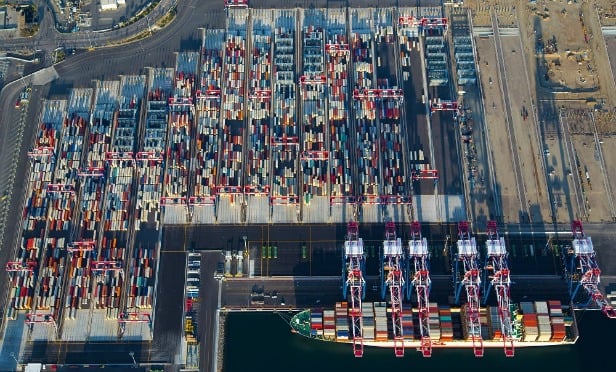 The Port of Long Beach is ushering in a new era of efficiency. At the recent Pulse of the Ports conference, Anthony Otto, president of the Long Beach Container Terminal, Marine Terminal Operator, highlighted the progress at the Middle Harbor Terminal, which will become the most efficient and cleanest terminal on the planet. The project is built out in three phases and the first two phases have already delivered. The final phase will be complete in 2021.
The Port of Long Beach is ushering in a new era of efficiency. At the recent Pulse of the Ports conference, Anthony Otto, president of the Long Beach Container Terminal, Marine Terminal Operator, highlighted the progress at the Middle Harbor Terminal, which will become the most efficient and cleanest terminal on the planet. The project is built out in three phases and the first two phases have already delivered. The final phase will be complete in 2021.
“We are building a new model that uses the best design and the best technologies to improve the level of service to the supply chain and restore confidence in Southern California as the preferred gateway of choice into the United States,” Otto said at the conference. “That is important if you consider that one out of every nine jobs is one way or another associated with the freight.”
The impetus for the redesign was a combination of evolving with new technology as well as reliving some challenges, including congestion, labor shortages and accommodating larger ships. The new terminal will accommodate ships with a capacity to move 22,000 TEUs. Additionally, there was a growing need for zero emissions and a faster and more efficient year. “This is something that we are going to have to deal with in a system that is better equipped,” explains Otto. “A more efficient model was needed to disprove the perception or the reality that for Southern California ports were unable to evolve with technology. So, the Middle Harbor redevelopment project was born.”
The new terminal will have the best technology available. The terminal will be able to accommodate a total of 3.3 million TEUs—larger than the entire Port of Oakland and the near equivalent of the combined capacity of Seattle and Tacoma's ports. The list of features goes on—from 14 of the largest ship-to-shore cranes in the country, 70 automated stacking cranes to 92 vehicle guides for autonomous transport that area all electric for zero emissions and two gate complexes with 28 in lanes and 17 out lanes.
It also breaks a lot of records: once complete, the terminal will have the fastest turn times in the country, the largest on-dock rail system in country and will be 84% cleaner than any other port in California. “This is a significantly different environment than we have had in the past,” said Otto. “We've built not only the cleanest container terminal in this country; we have built the cleanest container terminal on this planet.”
© Touchpoint Markets, All Rights Reserved. Request academic re-use from www.copyright.com. All other uses, submit a request to [email protected]. For more inforrmation visit Asset & Logo Licensing.






